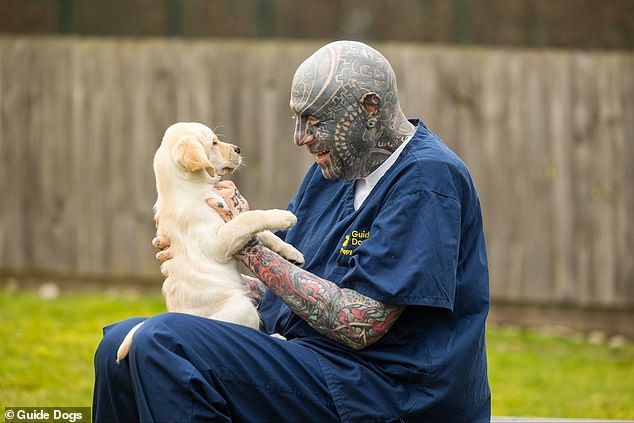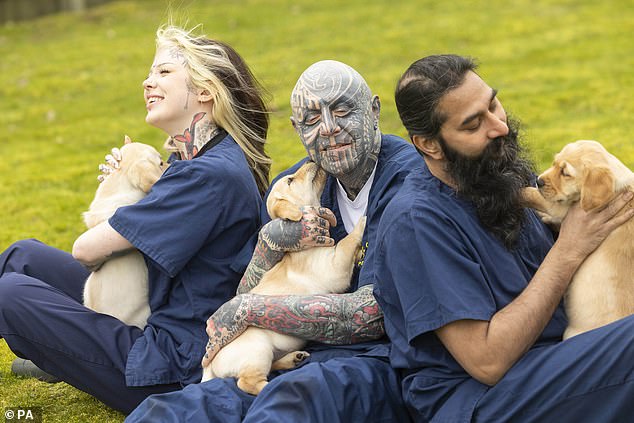Bad news for hipsters! Up to 1.2 million British dogs are afraid of people with facial hair and tattoos, figures reveal – as volunteers with these distinguishing features are recruited to help train guide dogs
- A survey of 2,000 people found that 10% of British dogs are afraid of facial hair
- Guide dogs rely on people with “unique qualities” to help train puppies
Up to 1.2 million dogs in Britain are afraid of people with beards and mustaches, figures show.
In a blow to the hipsters, a survey of 2,000 people found that 10 percent of British dogs react with fear or confusion when confronted with facial hair.
A charity has warned that puppies need to be exposed to unfamiliar physical characteristics from an early age to socialize them properly.
And they’re calling on people with beards, tattoos, piercings and other “distinguishing marks” to help train the next generation of guide dogs.
In addition to the unique characteristics of individuals, service dogs say things like vacuum cleaners, mops, bicycles, buggies, oversized hats, safety jackets and even uniforms can trigger reactions from dogs.
Up to 1.2 million dogs in Britain are afraid of people with beards and mustaches, figures show

Guide dogs are calling on people with beards, tattoos, piercings and other ‘distinguishing marks’ to help train the next generation of guide dogs
As a result, they are looking for all kinds of people to volunteer, including cyclists, parents and people who already have a dog.
Haley Andrews, head of puppy training at Guide Dogs, says: ‘Every owner’s goal is to have a dog that is comfortable and confident in all situations, and this can be achieved by giving puppies a strong bank of calm, positive experiences in early life and continuing them into adulthood.
‘Rather than exposing puppies to everything and everyone all the time, people should focus on bringing dogs into different situations at a comfortable pace and helping them practice a calm, neutral response.
‘Our Puppy Raisers are essential in ensuring that guide dog puppies get the best start to becoming future life changers, through the introduction of new environments and experiences, whilst providing a loving home.

Guide Dogs are looking for all kinds of people to volunteer, including cyclists, parents and people who already have dogs
“Regardless of your distinguishing features, all you have to do to become a volunteer is commit to showing a seeing-eye dog puppy the big wide world he will one day work in.”
The charity has created a puppy socialization ‘checklist’ – which should ideally be completed in the first 16 weeks of puppies’ lives – to help them adapt to a range of everyday situations.
Puppy Raisers prepare a puppy for life as a service dog, helping him through basic training and socialization in a caring home for 12 to 16 months.
The charity will cover costs including training, food and veterinary costs, with volunteers receiving expert guidance throughout.
The number of people with visual impairment in Britain is expected to rise to over four million by 2050.
